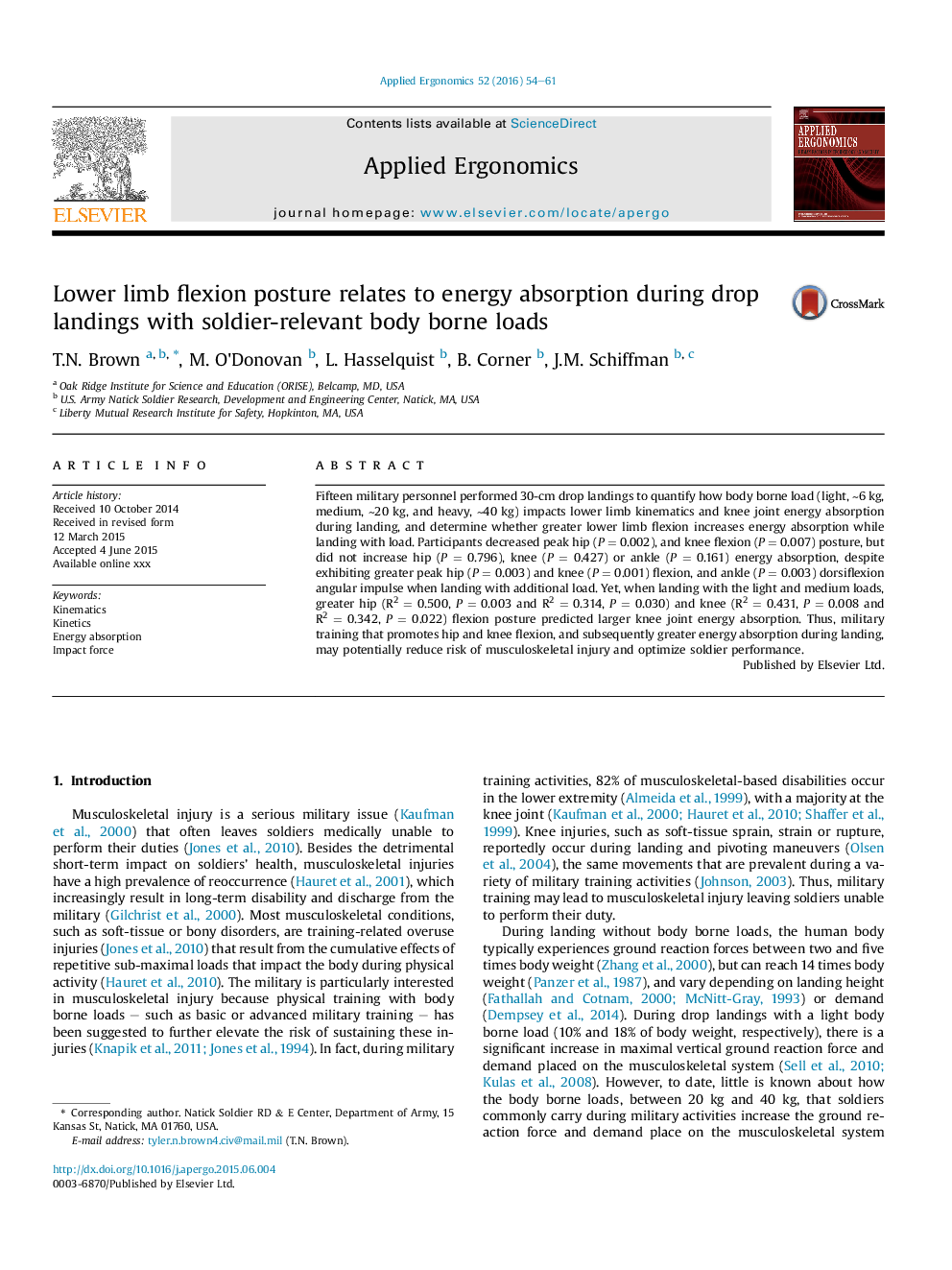| Article ID | Journal | Published Year | Pages | File Type |
|---|---|---|---|---|
| 6947918 | Applied Ergonomics | 2016 | 8 Pages |
Abstract
Fifteen military personnel performed 30-cm drop landings to quantify how body borne load (light, â¼6Â kg, medium, â¼20Â kg, and heavy, â¼40Â kg) impacts lower limb kinematics and knee joint energy absorption during landing, and determine whether greater lower limb flexion increases energy absorption while landing with load. Participants decreased peak hip (PÂ =Â 0.002), and knee flexion (PÂ =Â 0.007) posture, but did not increase hip (PÂ =Â 0.796), knee (PÂ =Â 0.427) or ankle (PÂ =Â 0.161) energy absorption, despite exhibiting greater peak hip (PÂ =Â 0.003) and knee (PÂ =Â 0.001) flexion, and ankle (PÂ =Â 0.003) dorsiflexion angular impulse when landing with additional load. Yet, when landing with the light and medium loads, greater hip (R2Â =Â 0.500, PÂ =Â 0.003 and R2Â =Â 0.314, PÂ =Â 0.030) and knee (R2Â =Â 0.431, PÂ =Â 0.008 and R2Â =Â 0.342, PÂ =Â 0.022) flexion posture predicted larger knee joint energy absorption. Thus, military training that promotes hip and knee flexion, and subsequently greater energy absorption during landing, may potentially reduce risk of musculoskeletal injury and optimize soldier performance.
Related Topics
Physical Sciences and Engineering
Computer Science
Human-Computer Interaction
Authors
T.N. Brown, M. O'Donovan, L. Hasselquist, B. Corner, J.M. Schiffman,
